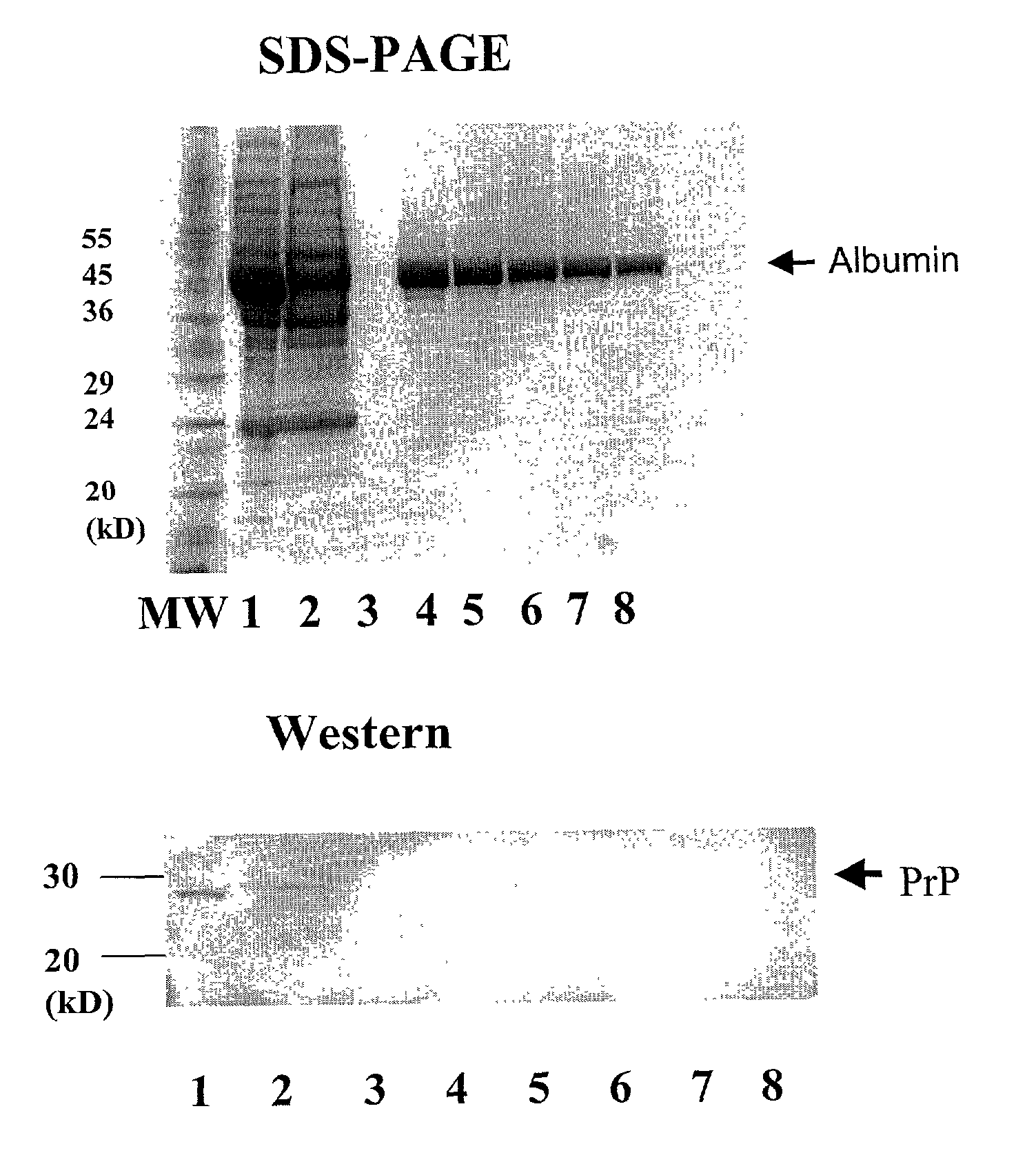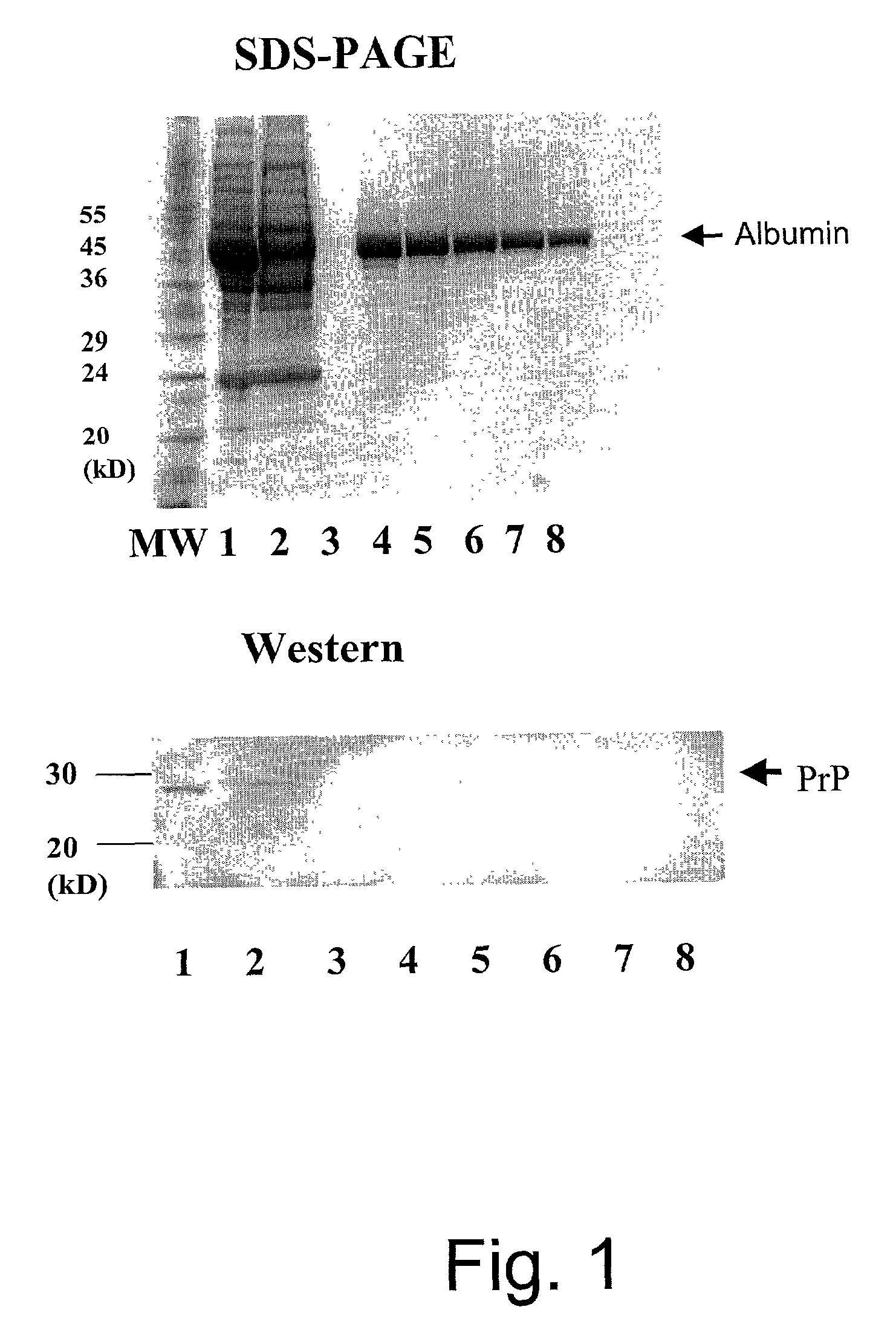Apparatus and method for separation of biological contaminants
- Summary
- Abstract
- Description
- Claims
- Application Information
AI Technical Summary
Benefits of technology
Problems solved by technology
Method used
Image
Examples
example ii
[0062] Prion diseases have recently become a focus of intense research, especially in Europe and the US. The unique mechanism of replication and transmission, and the ability of related prion diseases to transmit between species have contributed significantly to this area. While there is no epidemiological evidence yet to support Creutzfeldt-Jakob disease (CJD) transmission by human blood or blood products, a related disease in transmissible spongiform encephalopathy (TSE). Animal studies have highlighted that whole blood and its components such as plasma and buffy boat, are capable of transmitting the disease. The emergence of a new variant CJD has raised increased concerns about the safety of blood components and plasma products derived from vCJD-infected donors. Recent risk-minimization strategies have included a ban on the use of UK-sourced plasma for the preparation of licensed blood products and leukodepletion of blood donations. Although processes such as precipitation, depth...
example iii
[0073] Endotoxin Removal During Plasma Protein Purification
[0074] Contamination with bacterial endotoxin is a major concern when purifying plasma proteins, such as IgG and HSA. Endotoxins are a lipopolysaccharide derived from the lipid membrane of gram negative bacteria. The presence of endotoxin in a human blood fraction therapeutic can lead to death of the receiving patients.
[0075] 1. IgG Purification Procedure
[0076] Platelet free plasma was diluted one part in three with Tris-borate, pH 9.0 running buffer and placed in stream 1 67 of a separation apparatus 200 and spiked with purified E. coli endotoxin to a concentration of 600 EU / mL (endotoxin units / mL). A potential of 250V was placed across a cartridge 100 having a separating membrane 34 with a molecular weight cut off 30 of 75 kDa restriction membranes 30 and 32 with a molecular weight cut off of 50 kDa. A separation membrane 34 of this size restricts IgG migration whilst allowing smaller molecular weight contaminants to pass ...
example iv
[0087] Bacteria Removal During Plasma Protein Purification
[0088] Contamination with bacteria is a major concern when purifying plasma proteins, such as IgG and HSA. Contaminant bacteria can potentially infect a patient receiving plasma products, or during pasteurization of plasma products when bacteria dies releasing dangerous endotoxins that are harmful to the patient. Bacteria are easily detected by culturing samples on nutrient agar plates.
[0089] 1. IgG Purification Procedure
[0090] Platelet free plasma was diluted one part in three with Tris-borate, pH 9.0 running buffer and placed in stream 1 56 of the separation apparatus 200 and spiked with E. coli to a concentration of 4.times.10.sup.8 cells / mL. A potential of 250V was placed across a cartridge 100 having a separation membrane 34 with 200 kDa cutoff and restriction membranes 30 and 32 with 100 kDa cutoffs. A separation membrane 34 of this size restricts IgG migration while allowing smaller molecular weight contaminants to pas...
PUM
| Property | Measurement | Unit |
|---|---|---|
| Pore size | aaaaa | aaaaa |
| Electric potential / voltage | aaaaa | aaaaa |
| Isoelectric point | aaaaa | aaaaa |
Abstract
Description
Claims
Application Information
 Login to View More
Login to View More - R&D
- Intellectual Property
- Life Sciences
- Materials
- Tech Scout
- Unparalleled Data Quality
- Higher Quality Content
- 60% Fewer Hallucinations
Browse by: Latest US Patents, China's latest patents, Technical Efficacy Thesaurus, Application Domain, Technology Topic, Popular Technical Reports.
© 2025 PatSnap. All rights reserved.Legal|Privacy policy|Modern Slavery Act Transparency Statement|Sitemap|About US| Contact US: help@patsnap.com



